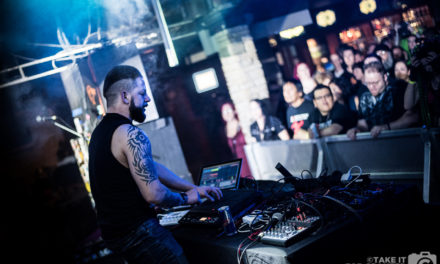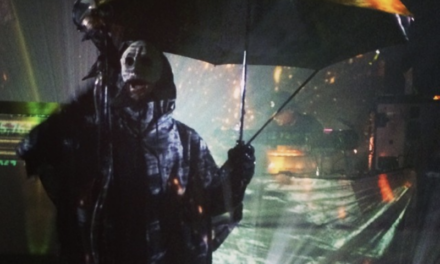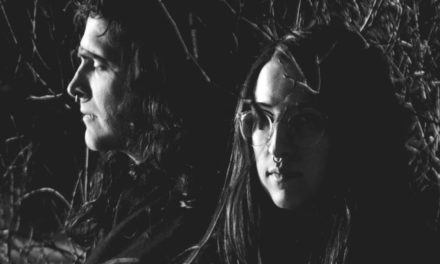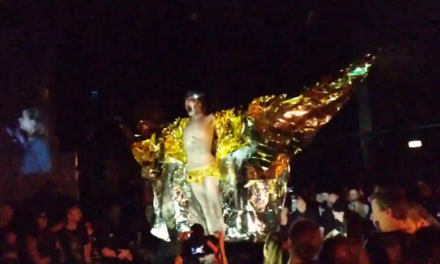Our Outland series of guest posts continues with a contribution from Andi Harriman. As the head DJ and label boss of NYC’s Synthicide and the author of 1980s goth compendium ‘Some Wear Leather, Some Wear Lace’ Andi has been a staunch chronicler of scene history as well as its ever-developing present. Her writing can be found at Bandcamp Daily and Post-Punk.com.
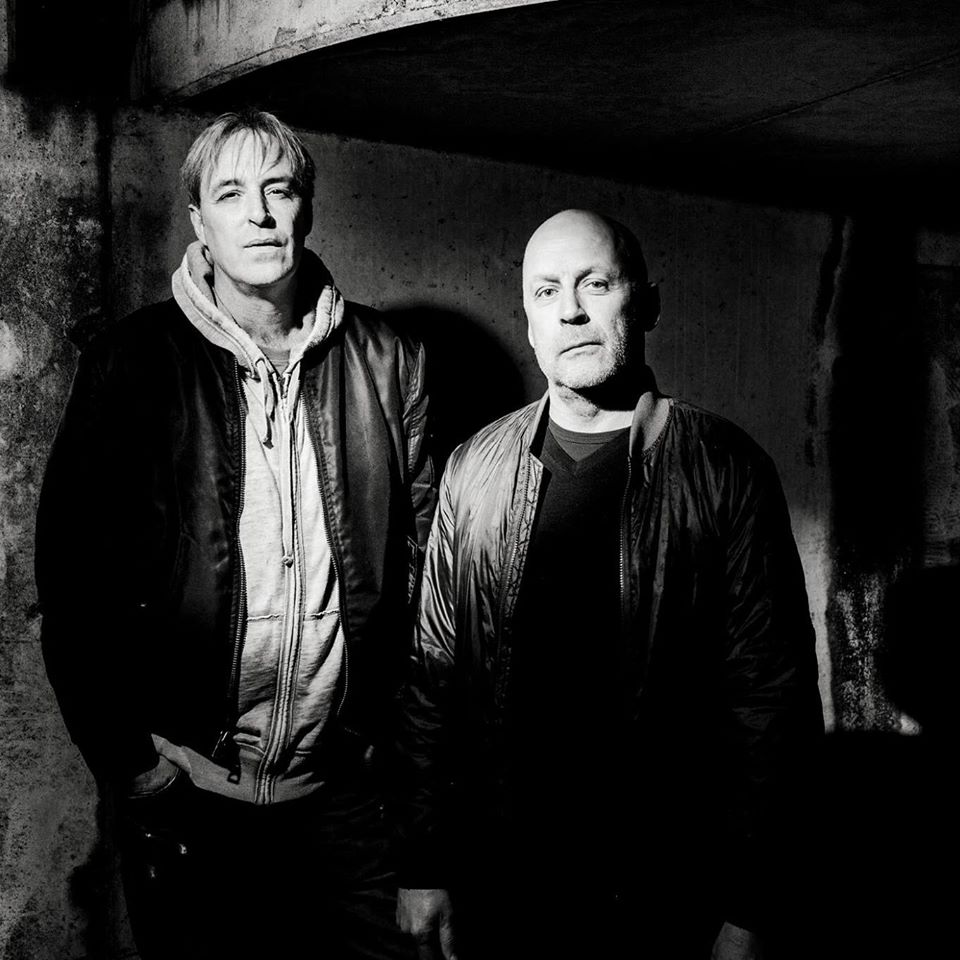
Sven Van Hees & Paul Ward, Photo by Gert-Jan De Baets.
Taken from the lascivious book of the same name, Liaisons Dangereuses was meant to be a total Welcome to the Pleasuredome experience. “The whole atmosphere of the radio show was this dark, moody club where decadent stuff happened,” says Paul Ward, the host of the influential program that spurred the new beat movement. Ward, who went on to form the group Liaisons D. in the late 1980s (and sampled The KLF’s “What Time is Love?” for their most famous hit, “Heartbeat”), produced the radio show in Antwerp, Belgium alongside a then-unknown, seventeen year old Sven Van Hees in 1985.
Liaisons Dangereuses was a direct extension of the experience at the Ancienne Belgique nightclub in Brussels. The DJs, notably Dikke Ronny, developed a particular atmosphere that thrived on a lazy, fat beat. Their cacophonous, yet cohesive DJ sets became known as the AB sound: punk songs, movie soundtracks, and industrial music which somehow fit together in one coherent stream. “In the beginning DJs would play Carlos Peron’s ‘Die Schwarze Spinne’ — which is a weird track, it’s actually film music — then play something like ‘Burundi Black’ [by Burundi Black], which is an African track from 1971. But all have a similar slower beat. In the pre-days of new beat, we would pick up electro tracks that were much too fast and start messing with the speed to create that slower, heavier, more atmospheric beat,” says Ward. “And that’s what happened with tracks like A Split-Second’s ‘Flesh’, which was the most famous.”
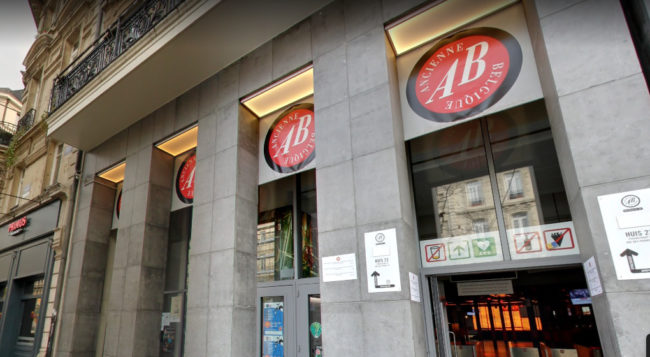
Ancienne Belgique
“Flesh” was slowed down from the 45 rpm speed to 33 ⅓ +8 on the turntable, which Ward claims initially upset A Split-Second: “The first time the band heard it, they cried because their masterpiece was raped by disrespectful DJs. But it was the new beat track. It was good, it worked in the club, and it sounded real.” Certain AB staples became so popularized by DJs that the song was unrecognizable when played at the correct bpm. “There were several tracks by Nitzer Ebb we slowed down, which was crazy because after a few years, no one in Belgium knew the real Nitzer Ebb,” says Ward. “They did a show in one of the small theatres and a lot of the public was really surprised that their music was so uptempo.”
The DJs at Ancienne Belgique were protective over the tracks played in the club, and often blacked out their records’ labels to maintain their elusive playlists. Half out of spite, Van Hees and Ward sought to reproduce the AB sets on Liaisons Dangereuses and spent six months scouring second hand shops in cities such as London, Düsseldorf, Paris, and Barcelona to find the dancefloor gems. “Once we had a nice bag of records, we started playing all their big hits and obscure tracks on the radio. In one week we had an open war with Ancienne Belgique,” laughs Ward. As Liaisons Dangereuses grew in popularity, the club DJs became frustrated that the radio show was exposing and, in turn, popularizing their treasured tracks. “We would decide if we gave the artist and title on air. So we did a lot of it and some we held back,” says Ward.
Not long after, Van Hees began incorporating his own flair to the mix. “From the first moment I heard [a track] I knew it would fit the show,” he says. This mish-mash of styles – usually between, but not limited to, 100 and 110 BPM – made the AB sound unique. “You couldn’t tell if it was a new wave band or a hip hop band,” says Van Hees. The lack of structure also seemed to work for the duo: “Paul always gave me total freedom, he put his ass on the line by using me,” Van Hees reminisces. “At the beginning of each show he never knew what I was going to play. That was the great thing about the show — there was not a lot of preparation.”
For the thirtieth anniversary of the show in 2015, Universal released a double CD of AB music curated by Ward and Van Hees titled Liaisons Dangereuses: Cult Radio Classics – The Early Years. It was the first time these influential songs came together outside of fuzzy bootleg recordings of the show from decades ago. Killing Joke’s “Turn to Red” and the quirky “We Have Come to Bless This House” by Severed Heads found a place beside Ministry’s “The Angel” and the moody synths of Chris & Cosey’s “Walking Through Heaven”. While there are well-loved industrial and EBM artists on the compilation, they are balanced out with surprising additions such as the Brooklyn hip-hop group Newcleus’ track “Automan” and the 1977 guitar-based “Cumbia del los Pajaritos” by Los Aragón.
The Liaisons Dangereuses structure was successful: play long, non-stop megamixes (inspired by New York City radio DJs) and reveal a little — but not too much — to maintain an air of mystery. “People would jump in the car from other cities in Belgium with their ghettoblaster and drive to a parking lot somewhere in Antwerp and tape the program, then drive back home and start making cassette copies for their friends,” says Ward of the show, whose signal reached a mere five mile radius.
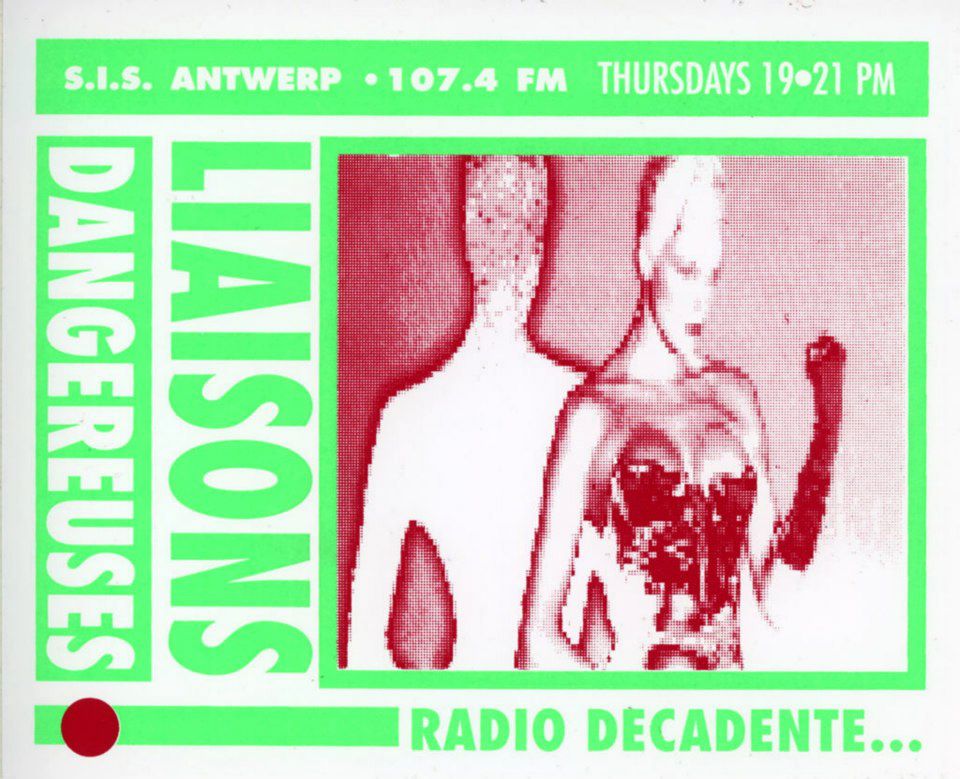
Liaisons Dangereuses flyer.
With the growing movement around Belgium — even top ten lists of obscure music were making the rounds —people started using the term new beat. Along with the name change, the underground aspect of the movement began to expand beyond cassette tapes: “We understood why people said new beat, because it sounded different. But at a certain moment, the wrong people started noting this success — especially with the club Boccaccio [outside of Ghent] opening up and they started making tracks that sounded like [our style of] new beat,” says Ward. “The only reason they did this was to make money and sell lots of records. And you know once that starts, it will implode.”
The Confettis’ elementary hit, “The Sound of C”, and the comical “Tanzen” by Tragic Error are prime examples of what many consider to be new beat today. However, according to Ward and Van Hees, new beat ended in 1987 when others caught on to the seductive, chugging tempo of the movement and repackaged it for mainstream consumption. Ward is adamant that they took no part in the popular genre. “We prepared the ground with our eclectic choice but the moment people started calling Nitzer Ebb new beat…well, it’s [a track] where we changed the speed a little bit. It’s body music, not new beat,” he argues.
By 1988, discouraged by its commercialization, Liaisons Dangereuses had abandoned their own style and moved largely to American house, acid, and early techno. What’s left from those two short years of AB music are found on Mixcloud uploads from original recordings of the radio show. Fans still attempt to put together the tracklists of Van Hees’ obscure offerings in the comments section. Even to this day, some track titles remain unknown — just as they were 35 years ago. Liaisons Dangereuses probably wanted it that way, anyhow.
Quotes in this piece are taken from interviews conducted by Andi Harriman in 2014/2015.

